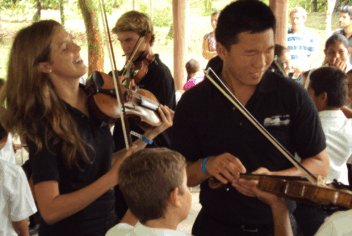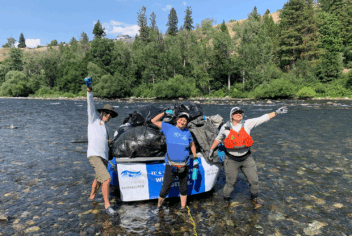I have talked to quite a few brokers and nonprofits about insurance. Quite often, they will get a quote from Nonprofits Insurance Alliance (NIA) and call me directly to ask about it.
If I am called directly by one of our members, I always ask if they’ve talked to their insurance broker.
The insurance broker should always be the first point of contact about a nonprofit’s insurance needs, as I discussed in a previous blog how to better work with your insurance broker.
The questions I am asked a lot are:
- “Exactly what is Directors and Officers Liability insurance”
- “What does it cover?”
- “How is it different than General Liability insurance?”
- “Do I really need to buy both?”
I’d like spend a few moments comparing the insurance extended under General Liability (GL) and Directors and Officers Liability (D&O) to clear up any confusion about these coverages.
Let’s start with General Liability.
In short, General Liability or GL covers claims for bodily injury (someone gets hurt), property damage (something gets broken) and personal and advertising injury (someone is slandered) where any or all of these things are caused by the acts or omissions of something the nonprofit did or didn’t do.
Here are two quick examples:
- Moving Keys is a nonprofit whose mission is to move pianos for other music-related nonprofits. While lifting a piano to a third-floor office, the rope breaks and the piano drops on a car. The piano damages the car (property damage) and injures the driver (bodily injury). GL would cover Moving Key’s liability to fix the car and cover the driver’s injuries.
- Howling at the Moon is a nonprofit whose mission is to protect wolves. Its executive director, Jacob Black, publishes a monthly newsletter. One month, he publishes an article about a homeowner who shot a wolf that had attacked his dog. In the article, Jacob calls the homeowner a “wolf murderer” and asks his readers to call the homeowner’s home phone number (which Jacob provided) to chastise him. The homeowner sued for slander and invasion of privacy (personal and advertising injury) and was awarded $10K. GL would also cover this claim.
In addition to covering the cost of indemnifying a bodily injury, property damage or personal and advertising injury claim, GL will cover the cost to defend the nonprofit against the kinds of claims discussed above.
In some cases, the cost of defending claims can be a lot more that than the actual damages.
There are certain types of claims not covered by (excluded from) GL.
For example, GL does not cover the injuries workers get while doing their job. These type of claims are covered under Workers’ Compensation insurance.
GL also doesn’t cover claims caused by the errors and omissions of professionals working for the nonprofit.
Example: A home healthcare provider accidentally burns a patient because the bath water was too hot. These types of claims are covered under Social Service Professional insurance.
The GL policy would also exclude auto claims (where the nonprofit employee is driving their vehicle and is involved in an accident). These would be covered under Automobile Liability.
Claims involving sexual or physical abuse are typically excluded from your GL policy. These types of claims are covered under an Improper Sexual Conduct policy.
There are a few other exclusions that are standard in a GL policy. I suggest you work with your broker to understand what they are and to make sure your nonprofit is covered for the material aspects of your operations.
Another type of claim that is also excluded from GL are claims due to bad decisions concerning the nonprofit made by the nonprofits’ directors, appointed officers, employees or volunteers.
These kinds of claims would be covered under the D&O policy
Let’s talk about Directors & Officers.
Directors and Officers Liability or D&O insurance covers damages for which the nonprofit is liable, which result from bad decisions, errors or omissions made by the nonprofits’ directors, appointed officers, employees or volunteers.
Examples of these types of claims are wrongful termination, unfair hiring practices, discrimination and sexual harassment.
Also covered are claims relating to poor management decisions with respect to managing funds, bad investment decisions and mismanagement of the company.
D&O also covers the cost to defend the nonprofit for being accused of these types of claims. Even if the nonprofit is not liable, the cost to defend these claims can be exorbitant.
Here is an example of a fairly common D&O claim:
Over the course of a few months, several high-performing employees and volunteers leave the nonprofit. The reason they all give is a toxic working environment caused by the poor management style of the Executive Director (ED).
The Board of Directors investigate and, after several unsuccessful efforts to help the ED with his management style, decide to replace the ED.
Subsequently, the ED sues the Board and the nonprofit, claiming discrimination.
The lion’s share (95%) of claims filed under D&O are related to wrongful termination, harassment, wage and hour law violations and discrimination.
Most recently, there have been changes to wage and hour laws and definitions of what constitutes an “employee” as opposed to an independent contractor.
Nonprofits want to make sure they are covered in case they are ever accused of making a mistake during this transition period.
So people often ask, “Can I just buy D&O insurance because it seems that D&O would cover most claims against the directors, officers and the nonprofit?”
This is a common misconception. D&O specifically excludes certain types of claims that are meant to be covered by other types of polices.
As an example, D&O specifically excludes bodily injury, property damage and personal and advertising injury claims.
As discussed above, these claims are covered by your GL policy. So, if you only buy a D&O policy, your nonprofit and/or your board would not be covered if a client visiting your facility slipped on a banana peel and injured themselves.
D&O would also exclude claims brought about from a board member breaking the law, claims from errors or omissions for professional services (a medical malpractice claim, for instance) and failure to provide the physical renovations which constitute accommodations under ADA.
There may be other exclusions so an astute nonprofit should work with their broker to understand them.
Also consider, many people with a high profile or high net worth are reluctant to serve on a board if the nonprofit doesn’t have D&O insurance.
As a board member, you can be sued personally for the errors or omissions you make as a board member.
Some states have protection for board members of nonprofits, but be very careful. These protections vary by state and in some states these protections are only valid if the nonprofit has D&O insurance.
Even if the protections apply, the board members may still incur legal fees. So even if the nonprofit doesn’t have employees, it is a good idea to have D&O to protect your board members.
Things to consider when buying D&O Insurance
What is the Self-Insured Retention (SIR) or Deductible on the policy?
The SIR/deductible is what the nonprofit has to pay out of pocket for each claim. It is just like a deductible on your personal auto or homeowner’s policy.
The difference between an SIR and a deductible is that the nonprofit pays the SIR upfront before the insurance company will even get involved. A deductible is paid by the nonprofit after the claim is settled.
At Nonprofits Insurance Alliance, we believe a deductible is more appropriate than an SIR for nonprofits as it does not put an upfront cash flow burden on the nonprofit at an already stressful time.
What loss control services does the insurance company offer?
When it comes to risk management buying insurance is only one piece of the puzzle. What is equally important is that the nonprofit do what they can to prevent the claim in the first place.
When a nonprofit purchases a D&O policy from Nonprofits Insurance Alliance, the nonprofit receives unlimited employment risk management assistance from three employment practices attorneys.
We encourage our members to call to get advice or even a second opinion for any employment practices question or concern.
Does your D&O policy provide coverage for the defense of costly claims?
While most D&O policies exclude coverage for penalties incurred when a nonprofit is found liable for wage and hour infractions, you want to make sure your D&O policy provides coverage for the defense of these costly claims.
Nonprofits Insurance Alliance’s D&O policy will cover up to $250,000 in defense costs for wage and hour law violation claims. Crucial coverage!
Who is insured under your policy?
Lastly, make sure you understand who is going to be insured under this policy.
Make sure it includes coverage to any person who was, is, or becomes a director, trustee, officer, employee, committee member, or volunteer of your nonprofit as well as the nonprofit itself.
Your broker can answer questions about General Liability and Director and Officers Insurance.
And be sure to take advantage of all the free resources available to members of Nonprofits Insurance Alliance.





